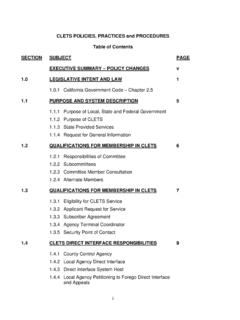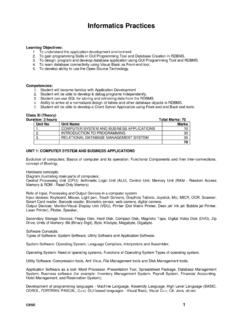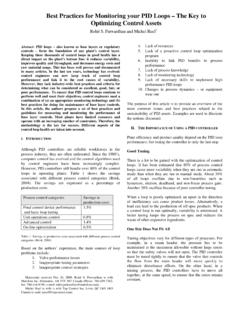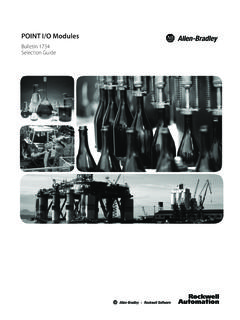Transcription of RR961 - Mobile Elevated Work Platform (MEWP) …
1 Health and Safety Executive Mobile Elevated work Platform (MEWP) incident analysis Prepared by the Health and Safety Laboratory for the Health and Safety Executive 2013. RR961 . Research Report Health and Safety Executive Mobile Elevated work Platform (MEWP) incident analysis Christine Leah David Riley & Amy Jones Harpur Hill Buxton Derbyshire SK17 9JN. Mobile Elevated work Platforms (MEWPs) are commonly used across all industrial sectors by a whole variety of trades, including mechanical and electrical contractors, and painters and decorators, as a safe, temporary method of working at height.
2 There is a large range of MEWPs on the market and their controls and functionality varies depending on the category, manufacturer, model and size of machine. As their popularity and range of applications has grown, concerns have emerged about trapping/crushing accidents involving MEWPs. This report identifies accidents involving MEWPs and analyses common factors found. The work has focused on MEWP occupants being trapped against overhead or adjacent objects whilst in the Platform of the MEWP, particularly when the operator becomes trapped over the controls (sustained involuntary operation of control).
3 Typically, this has occurred when the operator has been moving the MEWP within relatively confined areas. This research has centred on person-machine interface/human factors analysis rather than engineering issues. This report and the work it describes were funded by the Health and Safety Executive (HSE). Its contents, including any opinions and/or conclusions expressed, are those of the authors alone and do not necessarily reflect HSE policy. HSE Books Crown copyright 2013. First published 2013. You may reuse this information (not including logos) free of charge in any format or medium, under the terms of the Open Government Licence.
4 To view the licence visit , write to the Information Policy Team, The National Archives, Kew, London TW9 4DU, or email Some images and illustrations may not be owned by the Crown so cannot be reproduced without permission of the copyright owner. Enquiries should be sent to ii KEY MESSAGES The research provides evidence that there are significant numbers of accidents where operators of Mobile Elevated work Platforms (MEWPs) are trapped or crushed between parts of the machine and nearby obstructions particularly when working in confined areas.
5 Some accidents have resulted from operators reaching a position where they have been unable to operate/cease operating controls (sustained involuntary operation of controls). Some accidents have been the result of incorrect operation of controls. This can arise from different types of human error (slips, lapses and mistakes). To avoid such accidents there is a heavy reliance on operators not making foreseeable mistakes. Many MEWP users are likely to have low levels of experience of operating a MEWP, because it is a secondary and infrequent activity generated in connection with their main jobs (as electricians/painters, etc ) and this can adversely affect competence.
6 Additionally, poor lone working and rescue procedures have exacerbated the level of injury sustained. Many incidents can only be effectively addressed through better design. The data does not provide substantive evidence about the efficacy or otherwise of training given to operators. However the researchers stress the importance of effective training to address, for example, incorrect operation of controls, not just on a class of machines but on specific models given the variation in designs. iii iv EXECUTIVE SUMMARY Mobile Elevated work Platforms (MEWPs) are commonly used within industrial sectors as a method of working at height.
7 There are a large variety of MEWPs on the market including scissor lifts, articulating booms, telescopic booms, vehicle mounted booms, rail mounted booms and deck mounted booms. MEWPs can also be classified under various categories (see BS EN. 280:2009 and examples in Appendix 1). The controls and functionality of a MEWP will vary depending on the category, manufacturer, model and size of machine. MEWPs are used across all sectors, particularly for temporary work at height such as construction and maintenance activities, and by a whole variety of trades including mechanical and electrical contractors, and painters and decorators.
8 This report has focused on MEWP occupants being trapped against overhead or adjacent objects whilst in the Platform of the MEWP, particularly when the operator becomes trapped over the controls (sustained involuntary operation of control). This research has centred on person- machine interface/human factors analysis rather than engineering issues. OBJECTIVES. Identify data sources and initiate interrogation requests for MEWP incidents Gather, organise and review the data collected Highlight findings of the review and analysis of MEWP incidents METHOD.
9 A range of information about MEWP incidents was requested from international sources, including the Health and Safety Executive (GB), Occupational Safety and Health Administration (USA), Department of Labour (NZ), Safework (Australia) and the Australian Bureau of Statistics. The data was analysed for content in order to identify key factors that contributed to these incidents. MAIN FINDINGS. A number of key contributing factors were identified for operators becoming trapped or crushed whilst within the MEWP Platform . These are: Operator makes an error when operating the controls.
10 Probable failure in observing (perceiving/identifying) a hazard in the surrounding environment (situation awareness);. Operators leaning over the side rail of the Platform while manoeuvring;. Poor ground conditions;. Poor MEWP condition/maintenance;. Training and experience aspects;. Working alone. v vi CONTENTS PAGE. 1. INTRODUCTION .. 1. Background 1. Aims and objectives 1. 2. IMPLICATIONS .. 3. 3. METHODOLOGY .. 5. Online database search 5. Data obtained direct from sources 5. General internet search 6. Limitations of the data 6. 4.

















